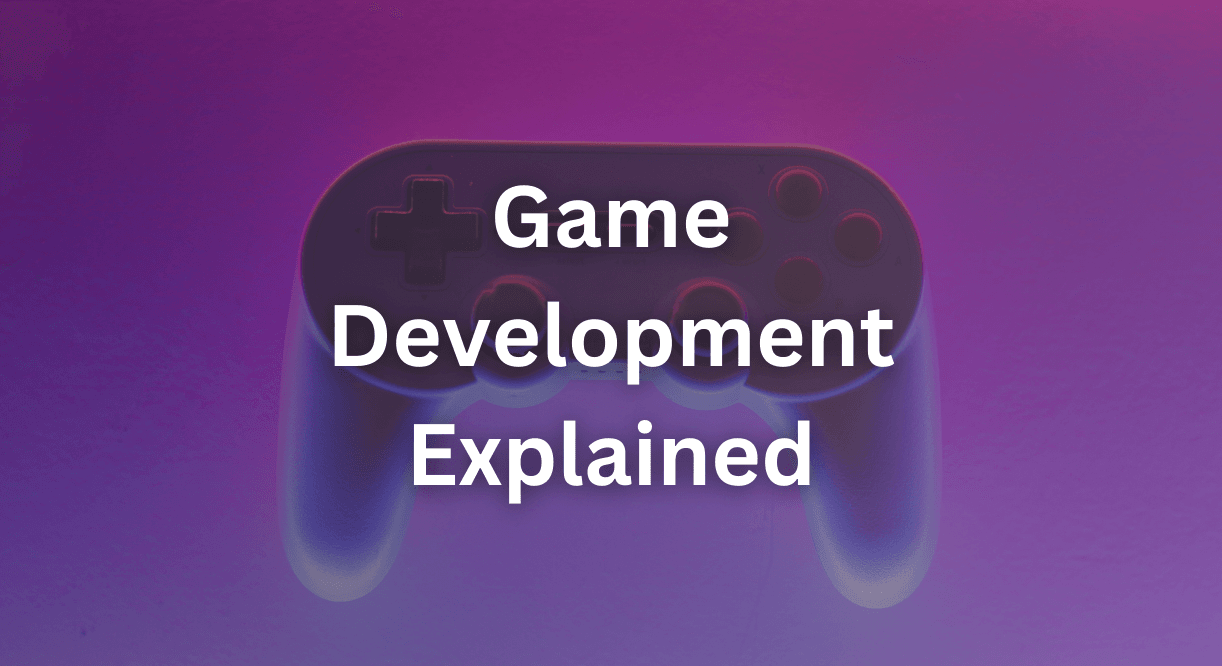Game Development Explained: How Games Are Made and Why It Matters
Table of Contents
Introduction
Have you ever played a video game and wondered how it was made? Game development is the fascinating process behind the creation of games we love. This journey involves a blend of creativity, technology, and teamwork. Whether you’re a gamer, an aspiring developer, or just curious, understanding game creation can give you a deeper appreciation for the games you play. In this blog, we’ll break down what game development is and the key steps involved in bringing a game to life.
What is Game Development?

Game development refers to the entire process of creating video games. It involves several key elements, such as writing code, designing characters, creating artwork, and crafting sound effects. It’s a team effort that combines the skills of various professionals, including programmers, artists, designers, and writers.
At its core, game development aims to create enjoyable experiences for players. This means thinking about how the game feels, how players interact with it, and how the story unfolds. Essentially, it’s about making a game that people want to play!
Key Stages in Game Development
Creating a game is like building a house; it requires careful planning and execution. Here are the main stages involved in the game development process:
1. Concept and Planning
Every game starts with an idea. This is the conceptual phase where developers brainstorm what the game will be about. Questions such as:
- What genre will it be (e.g., action, puzzle, adventure)?
- Who is the target audience?
- What makes this game unique?
Once the basic concept is solidified, developers create a game design document (GDD) to outline the game’s features, story, and mechanics. This document serves as a roadmap for the entire project.
2. Pre-Production
In this stage, the planning continues. Developers start building a prototype—a simple version of the game to test ideas and gameplay mechanics. This helps identify potential issues early on. During pre-production, the team will:
- Assemble a development team.
- Create timelines and budgets.
- Refine the game design document.
Having a clear plan helps ensure everyone is on the same page and can lead to a smoother production process.
3. Production
Production is where the magic happens. This stage involves creating the actual game, and it typically takes the most time. Key activities during production include:
- Game Design: Designing levels, characters, and environments based on the GDD.
- Programming: Writing code to bring the game mechanics to life.
- Art and Animation: Creating visual elements, such as graphics and animations that make the game look appealing.
- Sound Design: Adding music and sound effects that enhance the gaming experience.
Throughout production, developers conduct regular playtests to gather feedback and make improvements. This iterative process is crucial for creating a polished game.
4. Testing
Once the game is playable, it enters the testing phase. This is where quality assurance (QA) testers play through the game to identify bugs and issues. The testing process involves:
- Functional Testing: Ensuring all features work as expected.
- Performance Testing: Checking how well the game runs on different devices.
- User Experience Testing: Gathering player feedback to assess enjoyment and engagement.
Identifying and fixing issues during testing is vital for delivering a high-quality game.
5. Launch
After thorough testing, the game is ready for launch! This stage involves preparing for release, marketing, and distributing the game to players. Key steps include:
- Finalizing the game build and resolving any last-minute bugs.
- Promoting the game through social media, trailers, and press releases.
- Choosing distribution platforms (e.g., Steam, PlayStation, mobile app stores).
A successful launch is crucial for attracting players and gaining visibility in a crowded market.
6. Post-Launch Support
Even after the launch, the work isn’t over. Post-launch support includes fixing any remaining bugs, releasing updates, and engaging with the gaming community. This stage involves:
- Patching: Releasing updates to address issues and improve gameplay.
- Content Updates: Adding new features or levels to keep players interested.
- Community Engagement: Interacting with players to gather feedback and build a loyal fan base.
Effective post-launch support can extend a game’s lifespan and enhance its reputation among players.
What have you learned?

Conclusion
Game development is an exciting and complex process that transforms creative ideas into interactive experiences. From the initial concept to post-launch support, each stage plays a vital role in creating games that captivate players. By understanding the game development process, you can appreciate the hard work and dedication that goes into making your favorite games.
So next time you pick up a controller or tap your phone to play, remember the journey that game took to reach your hands. Whether you’re considering a career in game creation or just want to enjoy games more fully, knowing how they’re made can make all the difference.















Pingback: Everything about Game Genres
Pingback: The Best Game Development Tools for Beginners in 2024
Pingback: Game Development Tools for Beginners: Your Ultimate Guide to Starting Strong! – develle.in
vorbelutr ioperbir
Perfectly pent subject material, thank you for information. “The last time I saw him he was walking down Lover’s Lane holding his own hand.” by Fred Allen.